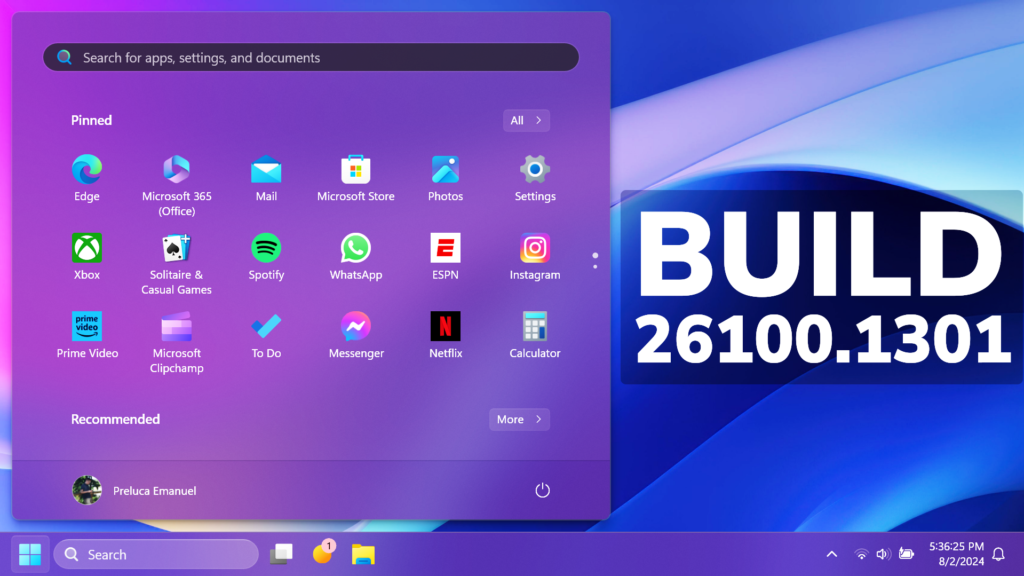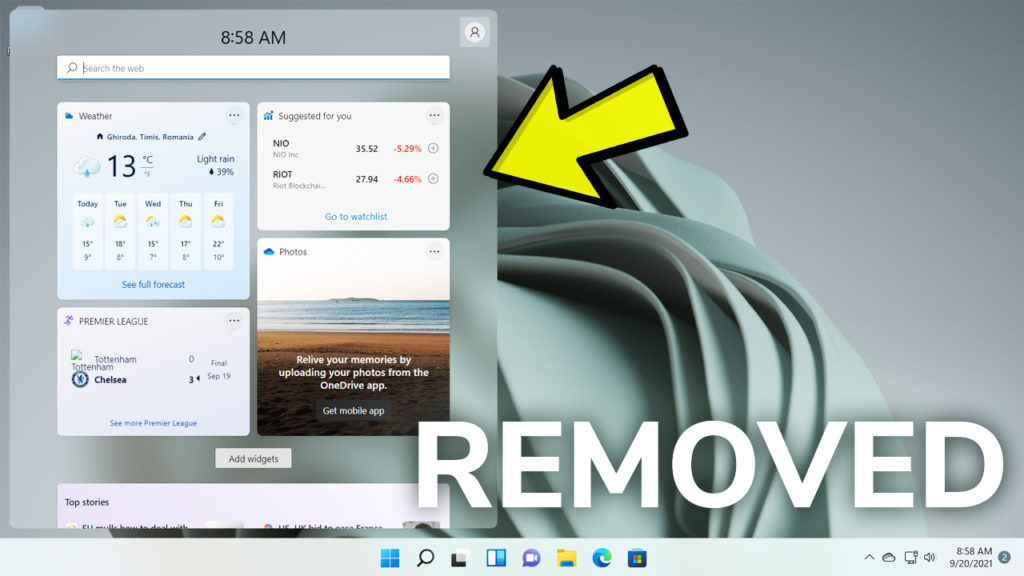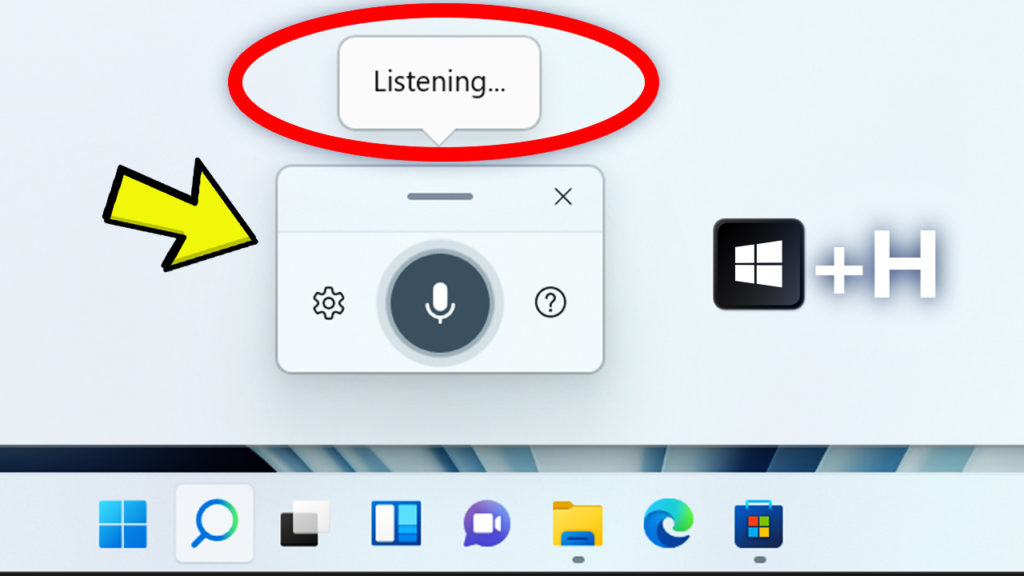In this article, we will talk about the latest Windows 11 Update for the Main Release, which is 26100.1301 or KB5040529.
For those of you who are not familiar with how Windows 11 Updates for the Main Release work, I will explain it to you in the following lines.
Every month Windows 11 has a B and a C Release for Windows 11. Usually, the B Release is launched on the second Tuesday of the month and contains all the features that were tested in the previous month’s C Release.
Improvements in this Build
This non-security update includes quality improvements. When you install this KB:
- This update adds support for Emoji 15.1. Windows supports Unicode symbol-like shapes for family groupings. But Windows will keep using people for them. Also, you can choose the right or left facing direction for some people emoji. The new emoji are:
- Horizontal and vertical head shake
- Phoenix
- Lime
- Brown mushroom
- Broken chain
- Start menu
- The new account manager is on the Start menu. When you use a Microsoft account to sign in to Windows, you will get a glance at your account benefits. This feature also makes it easy to manage your account settings.
- You can drag apps from the pinned section of the menu and pin them to the taskbar.
- Windows Backup Windows will now back up many of your sound settings (this includes your sound scheme). This only occurs if you turn on Remember my preferences and select the checkboxes for Personalization and Other Windows settings. To find these, go to Settings > Accounts > Windows backup. Then, you can use the Windows Backup app to restore those settings on a new device.
- Lock screen Sports, traffic, and finance content will appear along with weather. To turn on this feature, go to Settings > Personalization > Lockscreen.
- File Explorer You can now use your mouse to drag files between breadcrumbs in the File Explorer address bar. A breadcrumb shows the path to your current file location in the address bar. For example, there are three breadcrumbs in the path This PC > Windows (C:) > Program Files.
- Settings
- This update adds a page to Settings > Accounts called Linked devices. On it, you can manage your PCs and Xbox consoles. This page only shows on Home and Pro editions when you sign in to Windows using your Microsoft account (MSA).
- This update puts the “Add now” button in Settings > Accounts. When you select it, you can add a recovery email address if you have not added one for your Microsoft account yet. The button only shows if you sign in to your Microsoft account.
- This update adds a new Game Pass recommendation card on the Settings home page. This home page shows on Home and Pro editions when you sign in to Windows using your Microsoft account. The card appears if you actively play games on your PC.
- This update includes updated visuals for the “Rename your PC” and “Change date and time” dialogs to match the Windows 11 visuals.
- Windows share
- This update adds a feature that stops you from accidentally closing the Windows share window. Clicking outside of the window will no longer close it. To close it, select the close button at the upper-right corner.
- You can now create quick response (QR) codes for webpage URLs and cloud files from the Windows share window. Select the share button in the Microsoft Edge toolbar and choose “Windows share options.” Then, you can share the URLs and files across your devices.
- You can now send email to yourself from the Windows share window. You will receive the email at the email address that is in your Microsoft account.
- You can directly share to specific Microsoft Teams channels and group chats in the Windows share window. To do so, you must sign in using a Microsoft Entra ID.
- You can now copy files from the Windows Share window. Just click the new Copy button.
- Task Manager
- This update changes the units for DDR speed from MHz to MT/s.
- Task Manager releases process handles more quickly when it stops a process.
- This update makes Task Manager more reliable.
- This update affects the sort order of processes in Task Manager. Performance is better when you change the order.
- This update makes Task Manager more accessible by improving:
- Keyboard focus
- Tab key navigation
- Text scaling
- The readout of item names by screen readers
- High contrast heatmaps and more.
- This update makes resizing the Task Manager window easier when you grab the top of its window.
- Ejecting USB devices using the Safely Remove Hardware option fails. This occurs when Task Manager is open.
- The Widgets icons on the taskbar are no longer pixelated or fuzzy. This update also gives you a larger set of animated icons.
- This update adds PC Manager to devices in China.
- On USB controllers, the button might not work with Game Bar.
- You can now use OneDrive as a RemoteApp in Azure Virtual Desktop.
- In Windows nodes, VFP has more support for packet drop collection. This will make it easier to troubleshoot issues.
- n the latest build, the cache size display behavior is not what you expect.
- You cannot choose a group from the target domain for ILT. Also, you cannot choose an account from Local Users and Groups. The forest does not appear. This issue occurs when you deploy multiple forests, and the target domain has a one-way trust with the domain of the admin. This issue affects Enhanced Security Admin Environment (ESAE), Hardened Forests (HF), or Privileged Access Management (PAM) deployments.
- This update adds to the list of drivers that are at risk for Bring Your Own Vulnerable Driver (BYOVD) attacks.
- Local Security Authority Subsystem Service (LSASS) It fails at times when you set Field Engineering logging to 5.
- Devices that use certain WLAN cards stop responding.
Windows 11 Servicing Stack Update – 26100.1298
This update makes quality improvements to the servicing stack, which is the component that installs Windows updates. Servicing stack updates (SSU) ensure that you have a robust and reliable servicing stack so that your devices can receive and install Microsoft updates.
For more information about this Update, you can check this article from the Microsoft Blog.
For a more in-depth presentation of the New Update, you can watch the video below from the YouTube channel.



